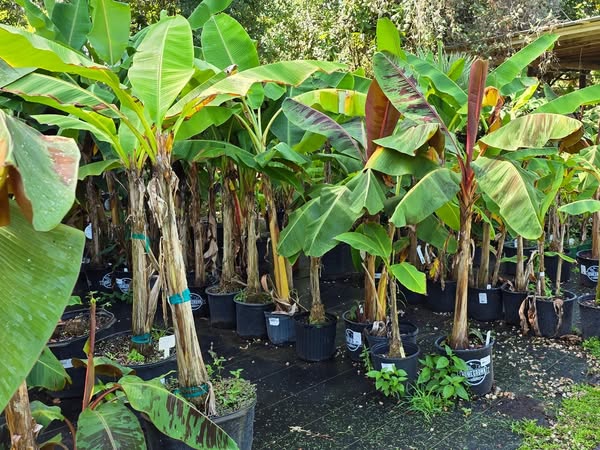Banana plants are bold, beautiful, and undeniably tropical. But when winter rolls in with its icy fingers, these sun-loving giants suddenly seem fragile—vulnerable to even a mild frost. So what do you do when you’ve fallen in love with a plant that hates the cold? You learn the art of overwintering banana plants—and save your leafy treasures from an untimely doom.
Whether you’re growing them in pots or straight in the ground, this guide will walk you through exactly how to protect your bananas from winter’s chill. Don’t worry—your tropical paradise isn’t doomed. You just need to think like a banana and act before the first freeze.

Why Overwintering Banana Plants Matters
What Happens to Banana Plants in Cold Weather?
Banana plants (especially varieties like Musa basjoo, Musa acuminata, or red bananas) are not frost-tolerant. A single dip below 32°F (0°C) can cause serious damage:
- Leaves turn brown and mushy
- Pseudostems collapse
- Root systems die off if left unprotected
- Entire plants may perish unless properly cared for
Can You Just Leave Them Outside?
In USDA zones 9–11, yes, your banana plant might survive the winter outdoors with minimal help. But in zones 8 and below? That’s a gamble not worth taking.
Two Smart Ways to Overwinter Banana Plants
Method 1: Overwintering Banana Plants in Pots (Bring Them Indoors)
If your bananas are already in containers, you’re in luck. Moving them inside is the simplest and most effective way to protect them from frost.
🪴 Step-by-Step Guide:
- Wait for Signs of Dormancy
When nighttime temperatures drop below 50°F (10°C), banana growth slows. That’s your cue to prepare. - Trim the Foliage
Cut the leaves back to about 6–12 inches above the soil. Don’t worry—it’ll regrow in spring. - Inspect for Pests
Check the undersides of leaves and soil for hidden insects. A quick rinse or insecticidal soap can help. - Choose the Right Spot Indoors
- A cool, dark basement or garage for dormancy
- A sunny indoor corner if you want to keep it semi-active
- Temperature should stay above 45°F (7°C)
- Reduce Watering
During dormancy, water only once a month—just enough to keep the soil barely moist. Too much water can cause root rot. - Wait Until Spring
Once outdoor temps are consistently above 50°F (10°C), you can reintroduce your banana to the great outdoors.
Method 2: Overwintering Banana Plants in the Ground (Mulch and Protect)
Got an in-ground banana in a cold zone? Don’t dig it up just yet—there’s still hope!
What You’ll Need:
- Pruning shears
- Garden stakes
- Burlap, chicken wire, or frost blankets
- Mulch: straw, dry leaves, wood chips, or pine needles
How to Do It:
- Cut It Down
After the first light frost, cut the banana stalk down to about 6–12 inches above ground level. - Build a Protective Cage
Use stakes and wire or burlap to create a cylinder around the base of the plant. - Stuff It with Insulation
Fill the cage with your chosen mulch. Pack it generously. The thicker the insulation, the better the protection. - Cover the Top
Use a tarp or frost cloth to cap it off. Secure it so wind or snow doesn’t dislodge the setup. - Mark the Spot
Trust us—it’s easy to forget where your banana was once winter fully sets in. - Remove in Spring
Once the threat of frost has passed, remove the mulch and see if your banana’s crown survived. In many cases, new shoots will emerge like magic.
Bonus Tips: Banana Plant Survival Secrets
Should You Feed Banana Plants in Winter?
No. During winter, banana plants are dormant and not actively growing. Fertilizing during this period can do more harm than good. Wait until spring.
Can You Propagate During Winter?
Yes, but it’s better to divide pups (the baby banana shoots) just before winter or right after it. Don’t stress the plant when it’s vulnerable.
What If the Entire Plant Turns Mushy?
If the stalk becomes mushy but the roots were insulated, there’s still hope. The top may have died, but the underground rhizome could bounce back in spring.
Best Cold-Tolerant Banana Varieties
Not all bananas are created equal when it comes to cold resistance. If you live in a chillier zone but still want that tropical flair, consider these hardy types:
- Musa basjoo – The gold standard for cold-hardy bananas. Can survive down to -10°F with proper mulch.
- Musa sikkimensis – Stunning red-striped foliage and decent cold tolerance.
- Raja Puri – Slightly more sensitive but compact and great for containers.
- Dwarf Orinoco – A stout variety that tolerates cooler climates in containers.
